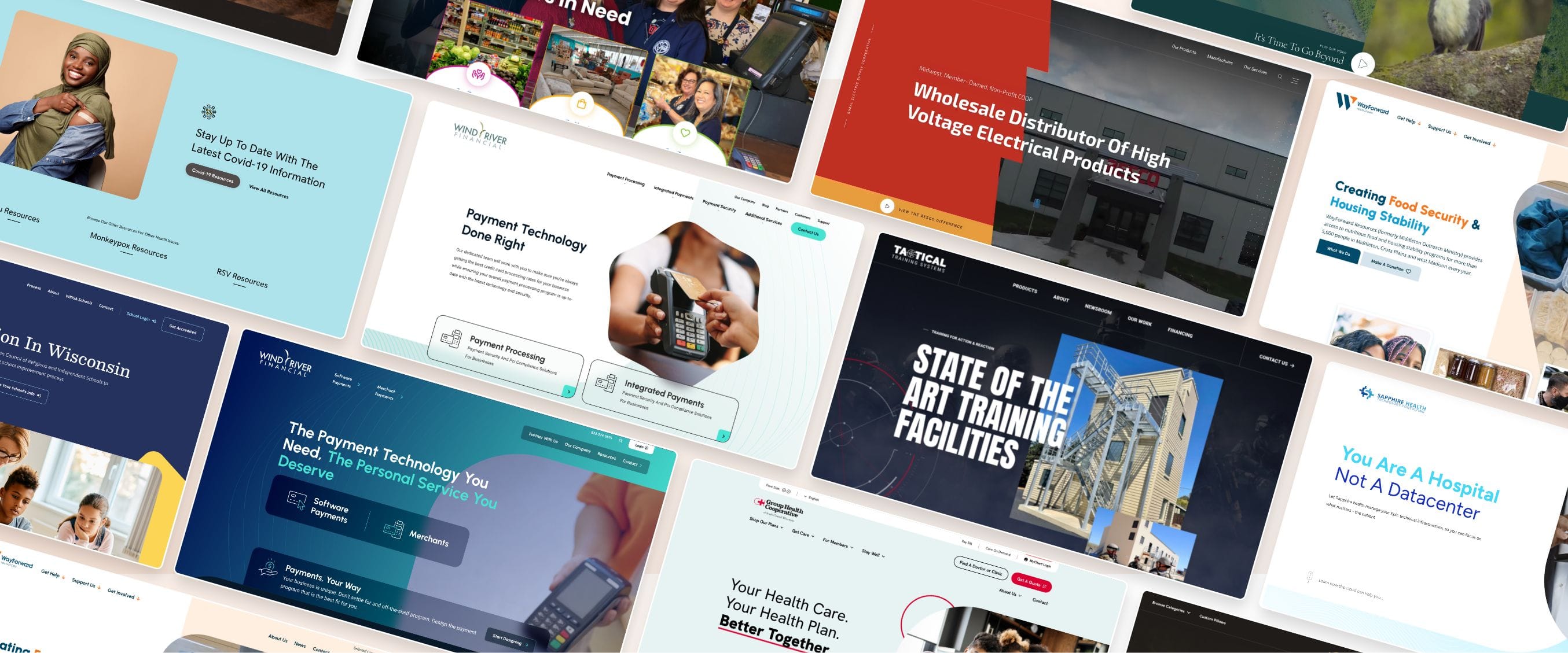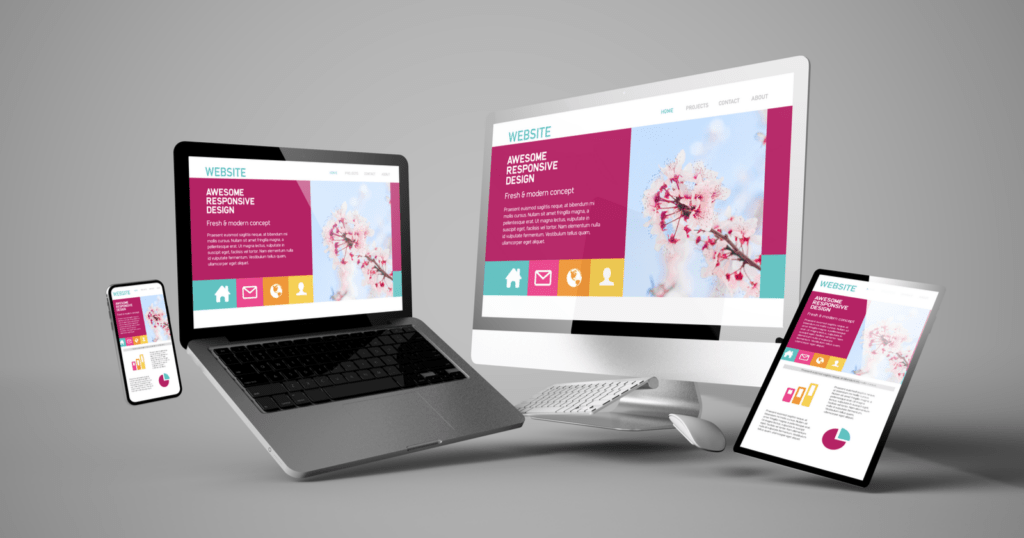Website Design Best Practices for Faster Load Times and Improved User Experience
Modern Site Layout That Captures Attention and Converts
In a progressively digital landscape, modern-day web site design has arised as a pivotal variable in catching customer interest and driving conversions. As we discover these vital elements, it ends up being clear that recognizing their interplay can significantly affect a site's efficiency and customer fulfillment.
Significance of Visual Hierarchy
Visual pecking order is a crucial aspect in web site design, as it overviews users' focus and boosts their total experience. By strategically organizing content, developers can guide customers to the most vital info first, thus raising involvement and boosting use. Efficient visual pecking order employs various methods, consisting of size, comparison, spacing, and shade. Bigger elements normally draw the eye, while contrasting colors can highlight vital messages, making them stand out among more suppressed components.
Including a logical flow in content plan is crucial; as an example, placing one of the most essential information on top of a page promotes immediate acknowledgment. Moreover, constant usage of typography, such as differing font sizes and designs, assists establish a clear material structure. This company not just help in navigation however also develops depend on, as users really feel more comfy when they can easily discover what they are looking for.
Inevitably, a well-executed visual pecking order not only boosts aesthetic allure yet also dramatically influences customer habits. By focusing on crucial aspects and guaranteeing a smooth experience, designers can properly transform visitors right into customers, strengthening the relevance of this fundamental layout principle in modern web site growth.
Responsive Design for All Instruments
Producing a smooth experience throughout various tools is vital in today's electronic landscape, where users access websites from desktop computers, tablets, and smartphones alike. Responsive style is a critical strategy that guarantees sites adapt fluidly to different display dimensions, resolutions, and alignments. By utilizing flexible grids, pictures, and CSS media questions, designers can create designs that maintain aesthetic integrity and capability, regardless of the tool being utilized.
The significance of responsive layout extends past aesthetics; it directly impacts user engagement and conversion rates. An internet site that works well on all devices urges longer brows through and decreases bounce prices, as customers are most likely to interact with web content that is easy to navigate. In addition, internet search engine, particularly Google, prioritize mobile-friendly websites in their positions, making responsive style an essential element of seo (SEO)
Integrating receptive design not just enhances individual experience yet likewise improves the growth procedure. By creating a single website that works across gadgets, services can conserve time and resources contrasted to creating separate mobile and desktop computer versions. Eventually, responsive design is a basic method for modern-day site layout, making sure access and complete satisfaction for all users, no matter their device.
Involving Interactive Elements
While a receptive design prepares for a practical web site, including interesting interactive elements is crucial for capturing user focus and cultivating much deeper links. Website Design. Interactive aspects, such as animations, quizzes, and clickable infographics, create a more vibrant customer experience, motivating visitors to spend even more time on the website
Including interactive functions can additionally guide users through complex information, making it easier to digest material. Interactive sliders can show item variants, while embedded video clips can offer demonstrations or testimonials that resonate more than static images or message. Gamification techniques, like incentives for engaging or completing jobs with web content, can boost user motivation and retention.
Effective use of interactive elements not only enriches my website the user experience but can also lead to higher conversion rates. It is important to balance interactivity with efficiency; overly intricate features might impede site speed, negatively impacting individual fulfillment.
Structured Navigation Practices
Efficient navigation is a cornerstone of any effective internet site, as it directly influences user experience and web content accessibility. Structured navigating methods make sure that individuals can easily locate information, boosting their communication with the site. A well-structured navigation menu need to be user-friendly and easy, usually featuring a limited variety of main categories to stay clear of frustrating visitors.
To achieve structured navigation, designers need to prioritize a hierarchical framework that rationally organizes material. Executing breadcrumb trails can give customers with context about their existing place within the site, permitting for smooth backtracking. Additionally, making use of drop-down food selections can efficiently preserve space while still giving accessibility to subcategories.
Receptive style is essential, as navigating should be useful across all tools (Website Design). Mobile customers, particularly, advantage from touch-friendly menus and collapsible sections that maintain functionality without endangering looks

Reliable Call-to-Action Methods
A well-crafted call-to-action (CTA) is vital for directing individuals towards preferred results on a website, as it motivates them to engage with web content or buy. To optimize their effectiveness, CTAs should be clear, engaging, and strategically put throughout the website.
First, make use of action-oriented language that connects necessity or value, such as "Get going," "Sign up with Currently," or "Insurance claim Your Discount rate." This language not just inspires individuals but additionally establishes clear expectations concerning the next steps.
Second, think about layout elements; CTAs must stand apart aesthetically with contrasting colors, enough whitespace, and prominent positioning. A switch that is simple to see and click increases the probability of individual communication.
Furthermore, individualizing CTAs based upon individual habits or demographics can significantly improve Clicking Here interaction. Tailored messages resonate more with users, driving greater conversion rates.

Final Thought
These elements jointly enhance user experience, guaranteeing that visitors remain involved and encouraged to discover material further. By prioritizing these design concepts, organizations can significantly improve customer retention and conversion prices, eventually leading to greater success in the electronic landscape.
In a significantly digital landscape, modern website layout has actually emerged as a pivotal variable in catching individual attention and driving conversions.Aesthetic power structure is a go to this website crucial component in web site style, as it guides users' attention and improves their overall experience.The significance of responsive style prolongs beyond appearances; it directly influences customer involvement and conversion rates.Integrating responsive design not only enhances customer experience yet additionally enhances the advancement process. Inevitably, receptive design is a fundamental approach for contemporary website layout, guaranteeing access and satisfaction for all customers, regardless of their gadget.